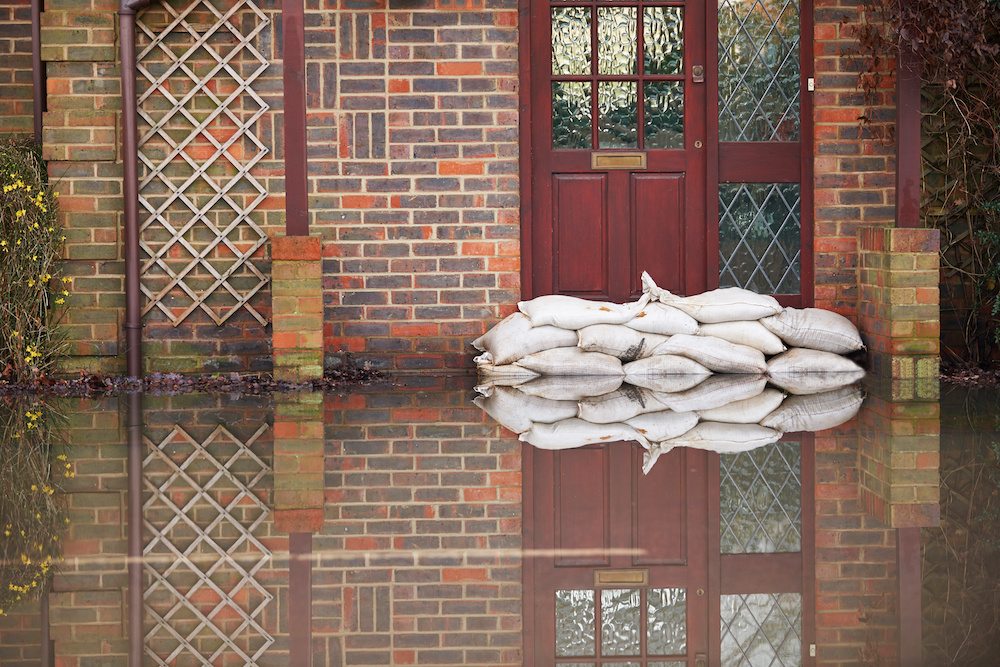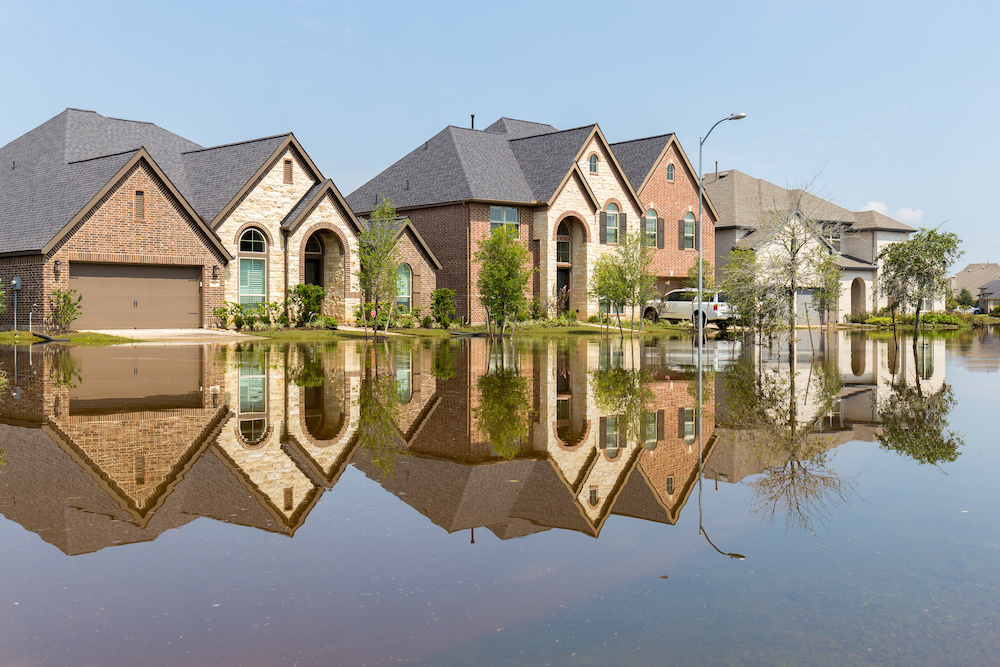Flooding is the most common and expensive natural disaster in the U.S., costing the nation billions of dollars each year. Spring, with its thunderstorms and rapid snowmelt, is the season when flooding
really starts to ravage households and businesses across the country. To prepare your home for spring flooding, it’s critical to know the risks, create a preparedness plan, and fix your home’s flaws. Here are the most important things you can do to guard your home against spring flooding.
Have Your Roof Inspected
- Slow leaks can cause costly damage down the road, so it’s important to maintain your roof regularly.
- Have a reputable contractor inspect your roof, check for undetected leaks, and make necessary repairs.
- Contractors can find potential weaknesses in the roof, such as loose shingles, and fix them to strengthen the roof against damage.
Purchase Flood Insurance
- Get separate flood insurance since it’s not included in the average homeowner’s policy.
- Do it as soon as possible, as it takes 30 days for a flood insurance policy to go into effect.
- Learn more about flood insurance from the U.S. Department of Homeland Security’s National Flood Insurance Program website.
Create a Home Inventory
- Having an inventory (with photos and videos) of your personal possessions helps you process an insurance claim if your home has suffered flood or storm damage.
- Make sure to back up your inventory in the cloud. Have digital copies of your important documents as well.
- Document your damaged or lost items after a storm. File the flood insurance claim that should include your inventory of damaged items with photos and video as proof.
Prune Your Trees
- Trim the trees that are growing near or hanging over your home to prevent them from damaging your home during a storm.
- Ensure all trees and large shrubs are alive, and remove any dead plants, as they are more likely to be broken by strong winds during severe weather.

Clean Your Gutters and Downspouts
- Keep your gutters clean and repair any gutter leaks so that they drain properly.
- Make sure gutters aren’t loose either, as strong winds can quickly tear loose the gutters from the edge of your roof.
- Check your downspouts for damage and clogging, and add downspout extension pipes to direct water well away from your foundation.
Waterproof Your Basement
- Ensure the ground around your foundation slopes away from your home by at least 6 inches over the first 10 feet.
- Install an interior drain system in your basement. It’s designed to collect and discharge groundwater that seeps inside the basement via the sump pump. Have a backup battery for your sump pump.
- Install flood detection devices in the basement for added peace of mind. They alert your smartphone if excess water accumulates in the basement.
- Inspect your home’s foundation for cracks and seal them as soon as possible.
Install a Sewer Backflow Valve
- Rising water from spring thaw or storms can cause sewage to back up into your home through the drainpipe.
- To prevent this, install a backflow valve onto the pipe. The valve has a flapper that closes automatically, stopping sewage from backing up into the pipe.
Protect Your HVAC System and Appliances
- Make sure HVAC equipment is installed above the base flood elevation (BFE) or place it inside a concrete or masonry block wall.
- Electrical components, such as service panels or outlets, should also be one or more feet above the BFE.
- Place the washing machine and dryers in the basement on cinderblocks, one foot above the BFE.

Shovel Snow Away from Your Home
- When removing snow, pay attention to the snow surrounding the foundation and window wells.
- Spring weather can soak your yard with extra water from snowmelt, which can lead to possible water seepages into your basement.
Waterproof Exterior Walls
- Ensure your exterior walls are well-sealed and painted to help keep the elements out of your home.
- Use caulk to seal cracks along the wall or around joints, such as window frames, door frames, and molding.
- If you’re repainting your home, use waterproof paint, but prime the walls first to protect them from the weather.
Know How to Turn Off Utilities
- Everyone in the household should know how to turn off electricity, gas, and water.
- Knowing how to use a fire extinguisher safely is also recommended.
Bring Possessions Inside Before a Storm
- If a storm is approaching, bring the items in your yard that can get damaged or carried by strong winds inside.
- If possible, move all vehicles and equipment to higher ground.
Call PuroClean Emergency Restoration Services for All Your Water Damage Needs
Plan now and take action before spring storms and spring flooding strike your area. For emergency flood cleanup or water damage repair or mold removal services, we can help. PuroClean’s restoration professionals are thoroughly trained to perform full restoration services in accordance with industry standards and best practices. Email us today at [email protected] or call us at (618) 206-7055 or (618) 979-8466.
Written by Dana Weiss




 PuroClean Emergency Restoration Services
PuroClean Emergency Restoration Services